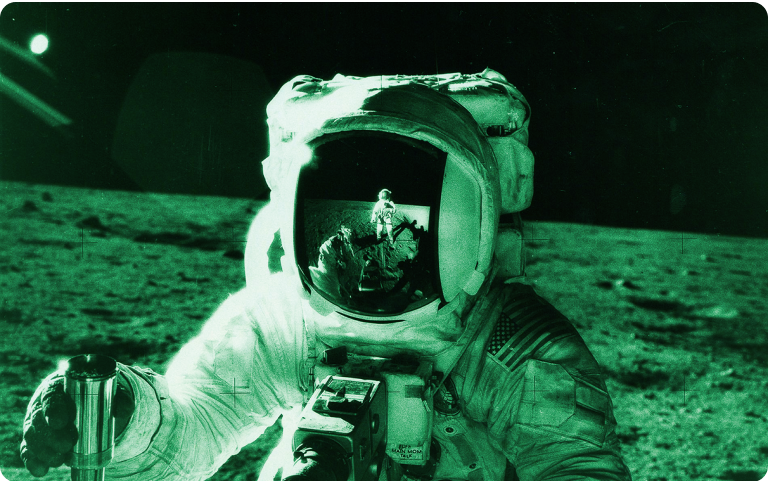Tana
NASA's ADLR Framework for Lessons Learned
How NASA structures their lessons learned and how you can implement this for yourself

On April 25th, 2011 NASA's Jet Propulsion Lab submitted the following as Lesson No. 5756 to the company-wide Lesson Learned Information System:
Abstract
During functional test of a circuit board, the metal snap on the sleeve of an ESD smock caused a short circuit and damaged the flight equipment. Procure only ESD smocks with elastic sleeve closures. Remain alert to items of personal apparel that could present a safety hazard to personnel or critical equipment.
You can find the full lesson learned report here.
What had happened?
"During functional test of a circuit board, the metal snap on the sleeve of an ESD smock caused a short circuit and damaged the flight equipment."
And like always, NASA investigated why this happened and what was to learn from it to prevent it occurring in the future. The results were the shared inside NASA using its framework for lessons learned.
NASA's ADLR framework for Lessons Learned
For its lesson learned reports, NASA follows the ADLR framework: Abstract, Driving Event, Lesson(s) Learned, and Recommendation(s).
In the abstract, NASA summarises in two or three sentences what happened, what lesson was learned, and which recommendations are derived from it. It condenses three sections of the report into a single paragraph: driving event, lesson(s) learned, and recommendations.
Below the abstract, NASA gives an account of the "driving event", the event that caused the lesson to be learned and the report to be made. It provides this in the context of the event: what mission or organisation did the event occur in? It also describes what exactly happened – zero fluff, no names, and pictures to illustrate where necessary.
The next section extracts what the event means. In report No. 5756, the lesson is the following:
"Lab coats or ESD smocks with metal fasteners on the sleeves pose a short circuit risk to powered flight hardware, and possibly pose a risk to personnel safety."
Like the "Driving Event" section, the "Lesson Learned" section is just descriptive.
NASA switches from descriptive to prescriptive in the "Recommendation(s)" section: given the event and what they learned from it, what should be done in the future? For report No. 5756 the recommendation is:
"Procure or lease ESD smocks with only elastic sleeve closures."
Together, these four section comprise NASA's framework for writing a lesson learned report. Importantly, the reports also get annotated with all the topics they relate to: Integration and Testing, Ground Equipment etc. Then, they get filed in a system available to all employees.
So what can we learn from this?
First, that even seemingly small events (a transistor blew during testing) contain lessons important enough to be recorded and shared. Second, that lesson learned systems don't need to be complicated. Just a few sections and a tagging system!
I've built a little system to record lessons learned following NASA's ADLR framework for myself in Tana and find it quite helpful in making sure even the little lessons that I learn don't get lost along the way.
Just today, for example, I recorded the following lesson learned:
TITLE: Taking an NSDR nap after lunch improves my motivation and ability to focus
ABSTRACT: Took a 10min long guided NSDR [Non-Sleep-Deep-Rest] session with elevated feet and a sleep mask on after lunch. Felt very refreshed about 20 minutes after the session. Make sure to incorporate NSDR sessions after lunch in the future.
DRIVING EVENT: After lunch I took a 10 minute long guided NSDR nap. Lying on the floor I elevated my feet by putting them on the couch, put on a sleep mask and listened to a 10 minute NSDR session guided by Andrew Huberman. While "getting up" was moderately difficult because I could have "slept" for much longer, about 20 minutes after getting up I felt quite well rested and refreshed.
LESSON(S) LEARNED: NSDR sessions help in restoring energy and focus
RECOMMENDATION(S): Incorporate NSDR sessions after lunch
TOPIC(S): Rest, Non-Sleep-Deep-Rest, Sleep, Energy (Personal, Mental & Physical), Mental Focus
This is obviously a very small and simple lesson, but that is exactly my point: the framework is so simple that it is worth it to even record the small lessons for the future.
I record my lessons learned in Tana using a very simple supertag. Here's how the lesson looks in my Tana workspace:

As you can see in the screenshot above, all I have here is a simple supertag #[[Lesson Learned]] with five fields. Abstract, Driving Event, Lesson(s) Learned, and Recommendation(s) are plain fields with no special settings. The Topic(s) field is an "instance field" where every node is tagged with the #[[topic]] supertag. That makes it very easy to later find all the lessons related to a particular topic – from sleep, to fitness, project management, or whatever else I record lessons on.
In the screenshot below, for example, I'm looking for all the lessons learned on "Mental Focus" – I think you can see how helpful this. And doing this naturally extends beyond yourself: if you and your team use Tana, it works just the same and can become the central repository for lessons learned throughout your work.

If you want to start using NASA's ADLR framework to record your own "lessons learned", I've put together a very simple Tana template for you to use, which you can get here.
Related Topics
Join My Tana Tips Newsletter
To be the first to know about new Tana features, tutorials, and other material I publish, join the 3000+ smart folks in my Tana Tips newsletter.
